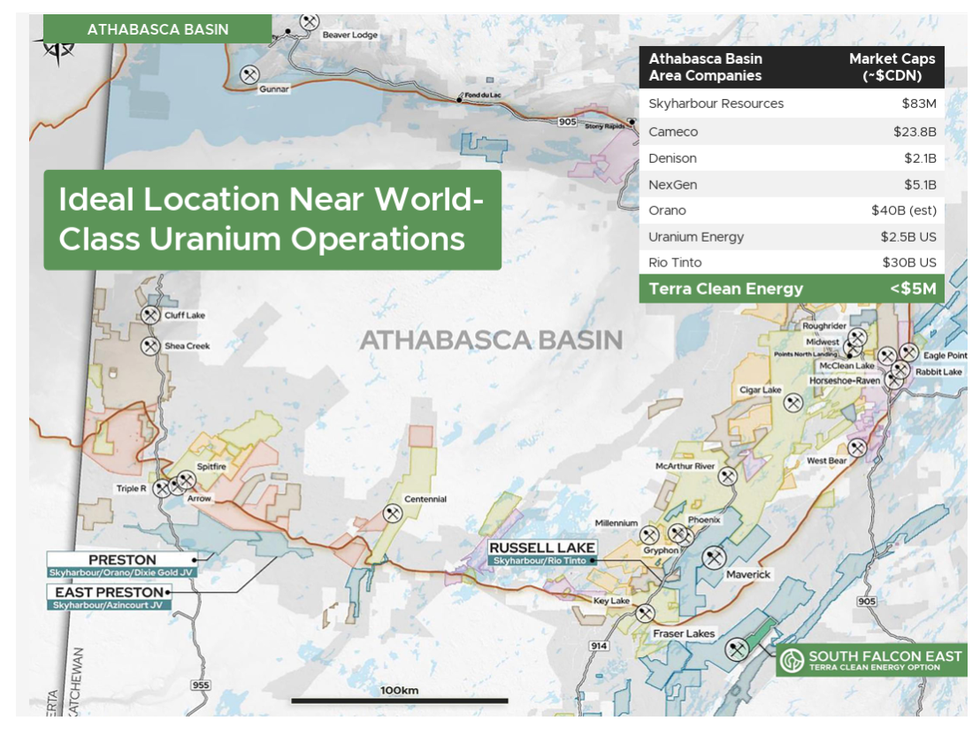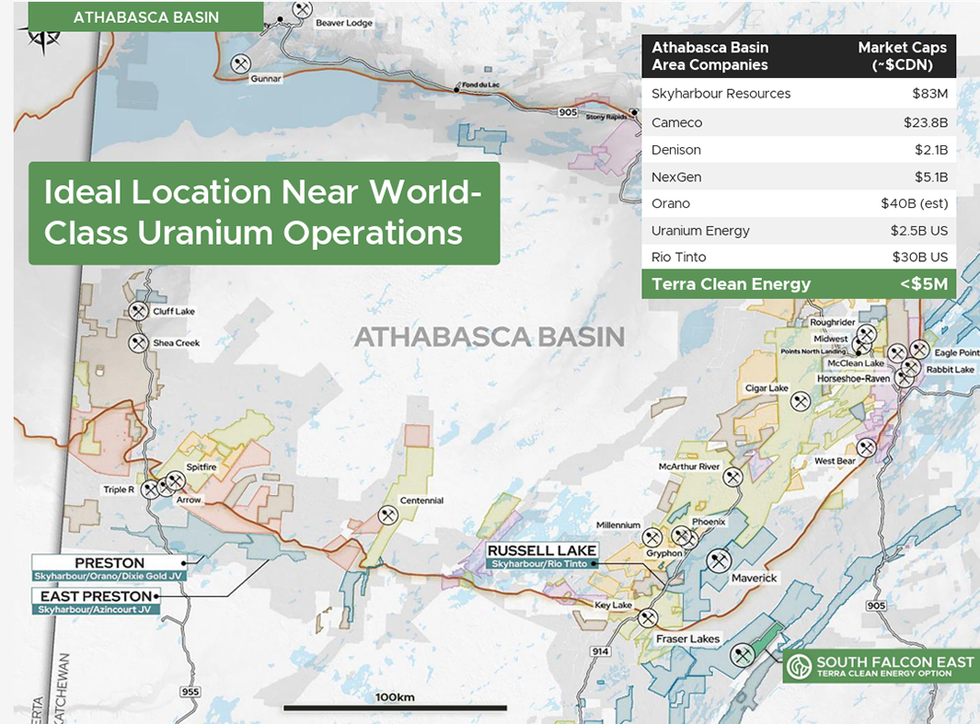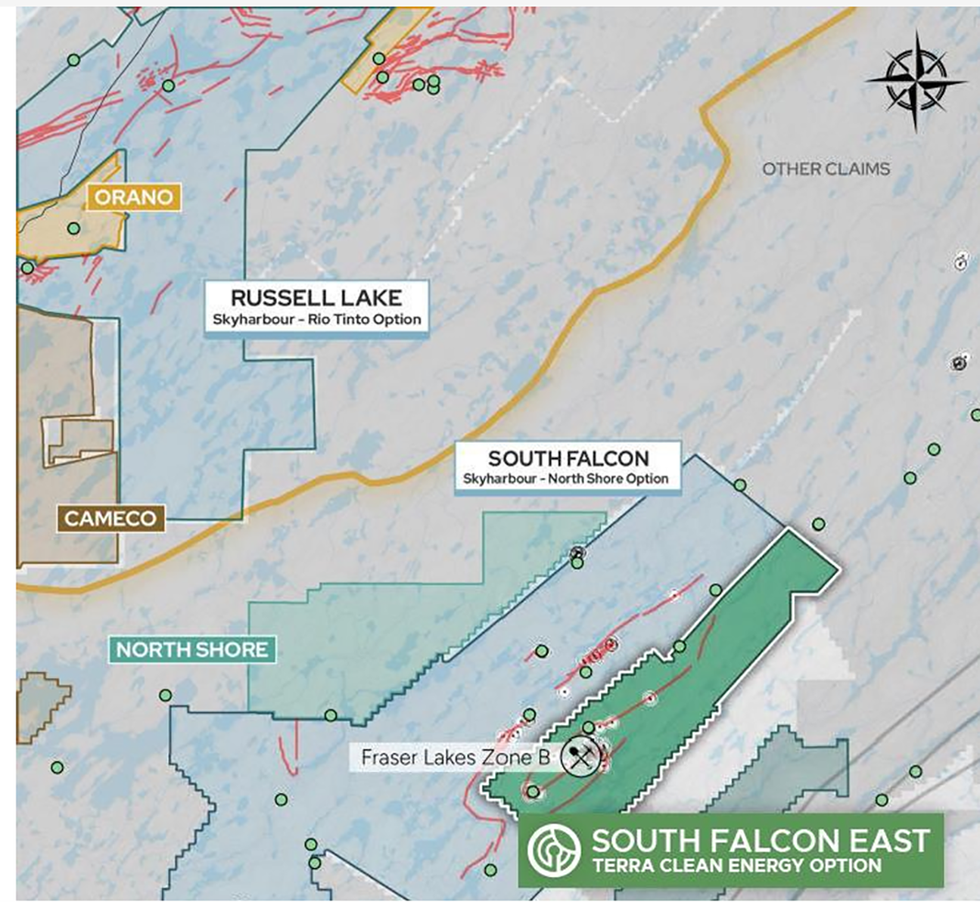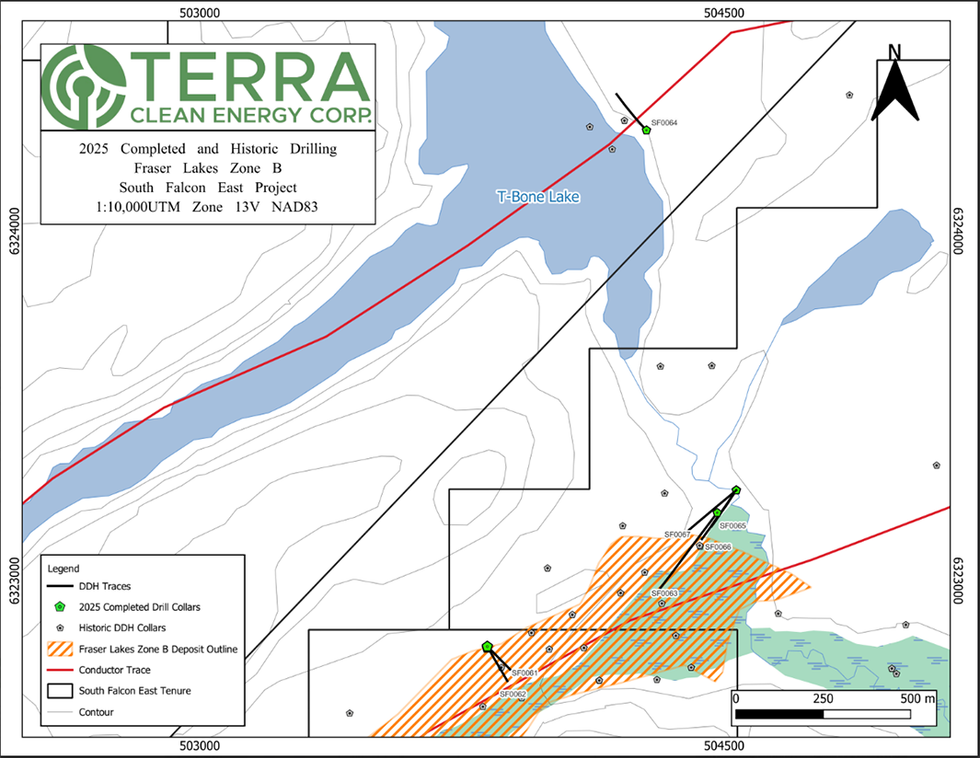Highlights:
- Pre-income tax IRR of 116% and NPV of US$120.9 million
- Post-income tax IRR of 101% and NPV of US$102.6 million
- 6.5 million pounds of U3O8 production over 7 years; steady state production of 1.0 million pounds per year
- Robust satellite project to Azarga Uranium's flagship Dewey Burdock ISR Uranium Project with low initial capital expenditures estimated at US$26.0 million
- Direct cash operating costs estimated at US$11.52 per pound of production
Azarga Uranium CORP. (TSX:AZZ)(OTCQB:AZZUF)(FRA:P8AA) ("Azarga Uranium" or the "Company") is pleased to announce the positive results of an independent Preliminary Economic Assessment ("PEA") on its Gas Hills In-situ Recovery Uranium Project in Wyoming, USA (the "Gas Hills Project") following an increased mineral resource estimate announced by the Company on 30 March 2021. The PEA has been prepared in accordance with the requirements of National Instrument 43-101 ("NI 43-101
Blake Steele, the Company's President and CEO commented: "We are extremely pleased with the results of our maiden in-situ recovery ("ISR") PEA for the Gas Hills Project. The PEA demonstrates robust economics and expands the future production profile of the Company into the state of Wyoming, which has a long history of successful ISR operations. The PEA results further validate our Company's strategy of developing low-cost ISR projects as we continue to progress our flagship Dewey Burdock Project towards construction. With uranium markets in a structural deficit, Azarga Uranium is exceptionally well positioned to capitalize on the anticipated recovery in the uranium price through its two tier one development stage ISR uranium projects in the USA."
Summary of Economics
The base case economic assessment results in a pre-income tax internal rate of return ("IRR") of 116% and a pre-income tax net present value ("NPV") of US$120.9 million when applying an eight percent discount rate. Using the same discount rate, the post-income tax IRR is 101% and the post-income tax NPV is US$102.6 million.
| Life of Mine Cash Flow Line Items | |||
Units | Total or average | US$ per pound of production | |
Uranium production (U3O8) | Lbs ‘000s | 6,507 | - |
Base case uranium price | US$/lb | 55.00 | - |
Uranium gross revenue | US$ ‘000s | 357,885 | - |
Less: surface and mineral royalties | US$ ‘000s | 629 | 0.10 |
Taxable revenue | US$ ‘000s | 357,256 | - |
Less: property, ad valorem and severance tax | US$ ‘000s | 22,918 | 3.52 |
Net gross sales | US$ ‘000s | 334,338 | - |
Less: plant and wellfield operating costs Less: resin processing and transport costs | US$ ‘000s US$ ‘000s | 37,957 16,571 | 5.83 2.55 |
Less: product conversion and shipping costs | US$ ‘000s US$ ‘000s | 2,538 8,896 | 0.39 1.37 |
Less: land and administrative support costs | |||
Less: D&D and restoration costs | US$ ‘000s | 8,966 | 1.38 |
Net operating cash flow | US$ ‘000s | 259,410 | - |
Less: pre-production capital costs | US$ ‘000s | 2,240 | 0.34 |
Less: plant development costs | US$ ‘000s | 14,126 | 2.17 |
Less: wellfield capital development costs Less: transfer pipeline costs | US$ ‘000s US$ ‘000s | 62,645 6,000 | 9.63 0.92 |
Net pre-income tax cash flow | US$ ‘000s | 174,399 | - |
Less: income taxes | US$ ‘000s | 24,842 | 3.82 |
After tax cash flow | US$ ‘000s | 149,557 | - |
The projected cash flows for the Gas Hills Project PEA are positive in the 1st year of production, two years after the commencement of construction. Initial capital expenditures are estimated at US$26.0 million.
Direct cash operating costs are estimated to be US$11.52 per pound of production, royalties and local taxes are estimated to be US$3.62 per pound of production and the total pre-income tax cost of uranium production is estimated to be US$28.20 per pound of production. Income taxes are estimated to be US$3.82 per pound of production and have been calculated on a project basis in accordance with NI 43-101 requirements; therefore, certain tax shelter balances, such as tax loss carry forwards available at the corporate level, have not been considered.
Pre-income tax NPV and IRR Sensitivity to Alternative Uranium Price Scenarios
| Uranium price scenario | NPV | IRR |
US$35/lb | US$34.9m | 44% |
US$40/lb | US$56.4m | 63% |
US$45/lb | US$77.7m | 81% |
US$50/lb | US$98.7m | 98% |
US$55/lb (base case) | US$120.9m | 116% |
US$60/lb | US$141.5m | 132% |
US$65/lb | US$163.5m | 150% |
US$70/lb | US$185.6m | 168% |
Cautionary statement: The results of the Gas Hills Project PEA are preliminary in nature and include inferred mineral resources that are considered too speculative geologically to have the economic considerations applied to them that would enable them to be categorized as mineral reserves. The Gas Hills Project PEA is based on the Company's mineral resource estimate announced on 30 March 2021. Mineral resources that are not mineral reserves do not have demonstrated economic viability. The estimated mineral recovery (80%) used in the Gas Hills Project PEA is based on site-specific laboratory recovery data and industry experience at similar facilities. There can be no assurance that recovery at this level will be achieved. There is no certainty that the Gas Hills Project PEA will be realized.
Project Description
Between 1953 and 1988 many companies explored, developed, and produced uranium in the Gas Hills district, including on lands now controlled by Azarga Uranium. Three uranium mills have operated in the district and two other uranium mills, which operated nearby, were also fed by ore mined from the Gas Hills district. Cumulative production from the Gas Hills district is in excess of 100 million pounds of uranium, mainly from open-pit mining, but also from underground mining and ISR.
Data sources for the estimation of uranium mineral resources for the Gas Hills Project include radiometric equivalent data (eU3O8) for 4,569 drill holes, and eU3O8 and prompt fission neutron logging data for 272 drill holes. The intent of recent drilling between 2007 and 2013 included verification of earlier data for drill holes and exploration.
Metallurgical studies were completed on recovered materials including bulk samples from reverse circulation drilling and cored sections. Bottle roll and column leach tests indicate uranium recoveries of ~90% and sulfuric acid consumption of ~55 pounds per ton treated, which is consistent with past mining results.
The Gas Hills Project PEA contemplates a satellite plant development approach with final processing at a central processing facility to be constructed at Azarga Uranium's Dewey Burdock Project. Construction of the Gas Hills Project will consist primarily of wellfields in four separate resource areas connected by pipelines to a single satellite plant location containing ion exchange equipment used to extract uranium from produced wellfield fluids. Ion exchange resin will be shipped from the Gas Hills Project to the Dewey Burdock Project for uranium stripping and regeneration, with creation of a dried yellowcake product at Dewey Burdock. This concept has been used successfully for decades in numerous ISR uranium operations in Texas and Wyoming. Wellfield extraction methods will utilize a low-pH complexing solution consistent with other successfully licensed ISR uranium facilities in Wyoming and worldwide. Average project flow rate is estimated at 2,400 gallons per minute with an average head grade of 97 parts per million for an annual production capacity of 1.0 million pounds U3O8.
Qualified Person
The disclosure of a scientific and technical nature contained in this press release was approved by Ray Moores, P.E., and Steve Cutler, P.G., qualified persons ("QP") as that term is defined under NI 43-101.
The Gas Hills Project PEA has been prepared in accordance with the requirements of NI 43-101 by Western Water Consultants, Inc. dba WWC Engineering, Ray Moores, P.E., QP and Roughstock Mining Services, Steve Cutler, P.G., QP. The full technical report and PEA will be filed on SEDAR at www.sedar.com and Azarga Uranium's website www.azargauranium.com within 45 days of the issuance of this news release.
About Azarga Uranium Corp.
Azarga Uranium is an integrated uranium exploration and development company that controls ten uranium projects and prospects in the United States of America ("USA") (South Dakota, Wyoming, Utah and Colorado), with a primary focus of developing in-situ recovery uranium projects. The Dewey Burdock in-situ recovery uranium project in South Dakota, USA (the "Dewey Burdock Project"), which is the Company's initial development priority, has received its Nuclear Regulatory Commission License and Class III and Class V Underground Injection Control ("UIC") permits from the Environmental Protection Agency (the "EPA") and the Company is in the process of completing other major regulatory permit approvals necessary for the construction of the Dewey Burdock Project.
For more information, please visit www.azargauranium.com.
Follow us on Twitter at @AzargaUranium.
For further information, please contact:
Blake Steele, President and CEO
+1 605 662-8308
E-mail: info@azargauranium.com
Disclaimer for Forward-Looking Information
Certain information and statements in this news release may be considered forward-looking information or forward-looking statements for purposes of applicable securities laws (collectively, "forward-looking statements"), which reflect the expectations of management regarding its disclosure and amendments thereto. Forward-looking statements consist of information or statements that are not purely historical, including any information or statements regarding beliefs, plans, expectations or intentions regarding the future. Such information or statements may include, but are not limited to, statements with respect to the Company's Gas Hills Project PEA, the future financial or operating performance of the Company and its mineral projects, the estimation of mineral resources, the timing and amount of estimated future production and capital, operating and exploration expenditures, the Company's future production profile expanding into the state of Wyoming, the Company being exceptionally well positioned to capitalize on the anticipated recovery in the uranium price, the Gas Hills Project PEA contemplating a satellite plant development approach with final processing at a central processing facility to be constructed at Azarga Uranium's Dewey Burdock Project, and the Company being in the process of completing regulatory permit approvals necessary for the construction of the Dewey Burdock Project. Such statements are subject to risks and uncertainties that may cause actual results, performance or developments to differ materially from those contained in the statements. No assurance can be given that any of the events anticipated by the forward-looking statements will occur or, if they do occur, what benefits Azarga Uranium will obtain from them. These forward-looking statements reflect management's current views and are based on certain expectations, estimates and assumptions, which may prove to be incorrect. A number of risks and uncertainties could cause actual results to differ materially from those expressed or implied by the forward-looking statements, including without limitation: the risk that the Gas Hills Project is not constructed and the estimated economics of the PEA are not realized, the risk that the estimated economics contained in the PEA do not reflect actual project economics, the risk that the Company's future production profile does not expand into the state of Wyoming, the risk that the Company is not exceptionally well positioned to capitalize on the anticipated recovery in the uranium price, the risk that a central processing facility is not constructed timely or ever at Azarga Uranium's Dewey Burdock Project and therefore the Gas Hills Project PEA cannot be realized, the risk that the Company does not complete regulatory permit approvals necessary for the construction of the Dewey Burdock or Gas Hills Project, the risk that such statements may prove to be inaccurate and other factors beyond the Company's control. These forward-looking statements are made as of the date of this news release and, except as required by applicable securities laws, Azarga Uranium assumes no obligation to update these forward-looking statements, or to update the reasons why actual results differed from those projected in the forward-looking statements. Additional information about these and other assumptions, risks and uncertainties are set out in the "Risks and Uncertainties" section in the most recent AIF filed with Canadian security regulators.
The TSX has not reviewed and does not accept responsibility for the adequacy or accuracy of the content of this News Release.
SOURCE: Azarga Uranium Corp.
View source version on accesswire.com:
https://www.accesswire.com/653480/Azarga-Uranium-Reports-Robust-Maiden-PEA-Results-for-Gas-Hills-ISR-Uranium-Project









